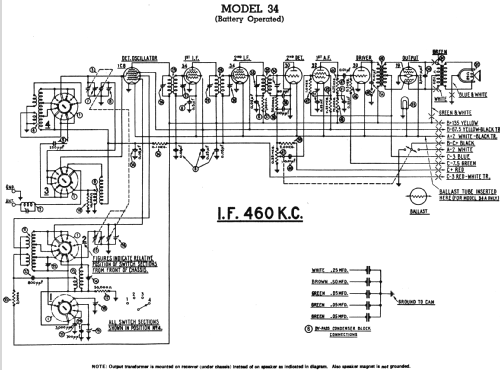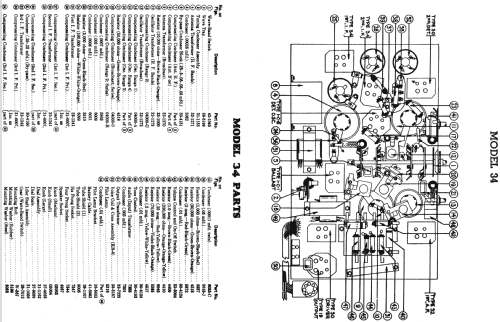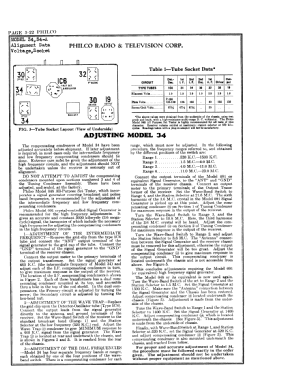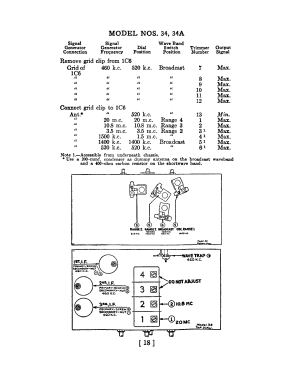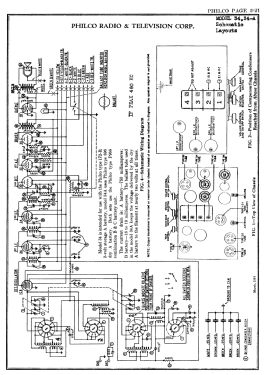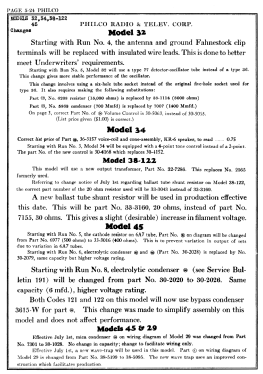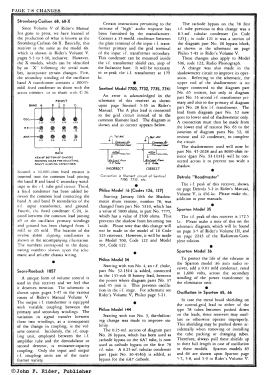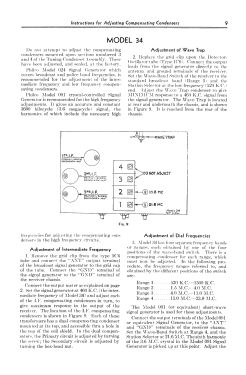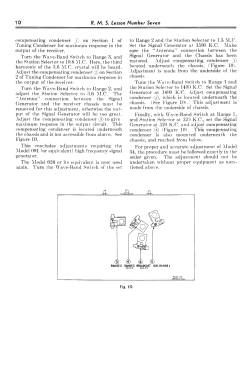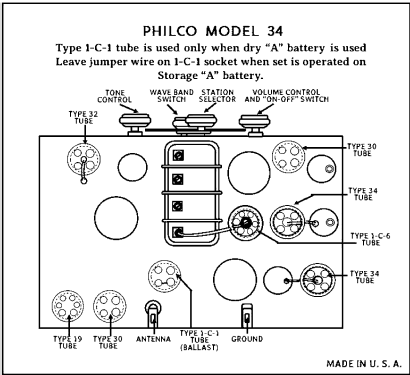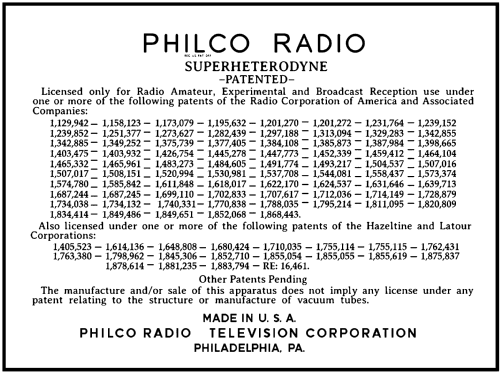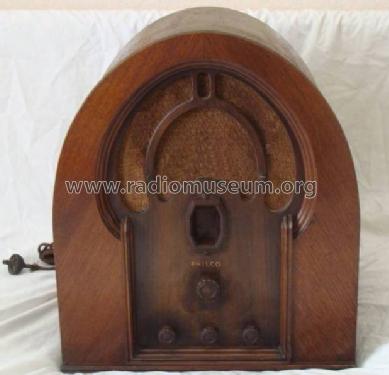34B (34, 34A) Early
Philco, Philadelphia Stg. Batt. Co.; USA
- Pays
- Etats-Unis
- Fabricant / Marque
- Philco, Philadelphia Stg. Batt. Co.; USA
- Année
- 1934/1934
- Catégorie
- Radio - ou tuner d'après la guerre 1939-45
- Radiomuseum.org ID
- 135777
Cliquez sur la vignette du schéma pour le demander en tant que document gratuit.
- No. de tubes
- 7
- Principe général
- Super hétérodyne (en général); FI/IF 460 kHz; 3 Etage(s) BF
- Gammes d'ondes
- PO et plus que 2 x OC
- Tension / type courant
- Piles (rechargeables ou/et sèches) / 135 & 67.5 & 2 & -3 & -7.5 Volt
- Haut-parleur
- HP dynamique à aimant permanent + bobine mobile
- Matière
- Boitier en bois
- De Radiomuseum.org
- Modèle: 34B [Early] - Philco, Philadelphia Stg. Batt
- Forme
- Modèle de table vertical cathédrale (dessus arrondi)
- Remarques
- Philco's model 34 series used a 4-band (BC - 23 MHz) 7-tube chassis powered by batteries. The standard model 34 chassis used a 2 volt A supply from a storage battery, while the 34A chassis was designed for dry battery A supply and had an extra ballast tube in series with the A supply, presumably to lower the A supply from 3 to 2 volts. Both types of chassis used two separate -3 V C batteries, one with a connection common to the other batteries, and one independent.
There were three versions of the model 34B table radio. The early version (1934) used the flat-front version of one of Philco's classic cathedral cabinet designs with spade-shaped speaker opening. The middle version (1934) used a different cathedral cabinet with a scalloped top. The late version (1935) was a shouldered tombstone with a lyre-shaped speaker opening with three vertical bars through the center.
There were two versions of the 32L lowboy - an early version (1934)with four mostly-vertical bars through the speaker opening, and a late version (1934-35) with nested V- and W-bar patterns through the speaker opening.
- Source du schéma
- Rider's Perpetual, Volume 5 = ca. 1934 and before
- Littérature
- Philco Radio 1928-1942
- Schémathèque (1)
- Philco 1928-36 Wiring Diagrams, Parts Lists, and Essential Service Data
- Auteur
- Modèle crée par Thomas Albrecht. Voir les propositions de modification pour les contributeurs supplémentaires.
- D'autres Modèles
-
Vous pourrez trouver sous ce lien 4120 modèles d'appareils, 2227 avec des images et 3768 avec des schémas.
Tous les appareils de Philco, Philadelphia Stg. Batt. Co.; USA
